August 21, 2025
"Urban Weather Prediction Model": Visualizing Building Winds with Industry-Leading 5-Meter Grid Resolution
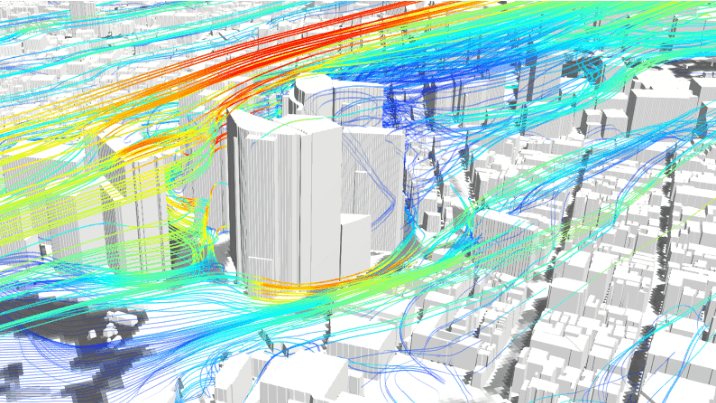
In urban environments where we live and work, city-specific weather phenomena significantly impact our daily lives. These include strong winds channeling between buildings, heat accumulation caused by urban heat island effects, and flooding from sudden downpours.
Weathernews has focused on localized winds that conventional weather prediction models cannot adequately capture. We call these the "invisible winds of urban areas," and we have been advancing the development and practical implementation of our "Urban Weather Prediction Model."
In this interview, we spoke with Kazunari Takahashi from our Forecast Center Development Team, who leads the development of this Urban Weather Prediction Model, about the development background, key features, and future applications of this technology.
Pinpoint Prediction of Dangerous Urban Winds: Joint Development with Universities for Operational Use
Many people have likely experienced walking near a building and encountering strong gusts, even when the weather forecast didn't predict windy conditions. Building winds in urban areas don't just cause discomfort for pedestrians. They can pose serious safety risks by sending signage and equipment flying. In urban construction, strong winds make crane operations impossible. High-altitude work during windy conditions is extremely hazardous, requiring work stoppages when conditions exceed standards established by occupational safety regulations.
Conventional weather prediction models operate on 5-20 kilometer grids, making them excellent for municipal or prefectural-level forecasts. However, they struggle to directly capture the localized weather phenomena created by complex urban structures like building corridors and densely packed neighborhoods.
To address this challenge, we developed our "Urban Weather Prediction Model," which simulates wind flow at an ultra-high resolution of 5-meter grids. This model enables us to realistically reproduce how buildings cause winds to strengthen, weaken, or change direction with remarkable detail.
Our Urban Weather Prediction Model is built on City-LES technology, developed by Professor Kusaka and his team at the University of Tsukuba's Center for Computational Sciences. We began joint research with the university in 2017, and after extensive model refinements and accuracy validation for operational deployment, we launched the system in 2020. City-LES research has been published by the American Geophysical Union (AGU), one of the world's largest earth science organizations1.
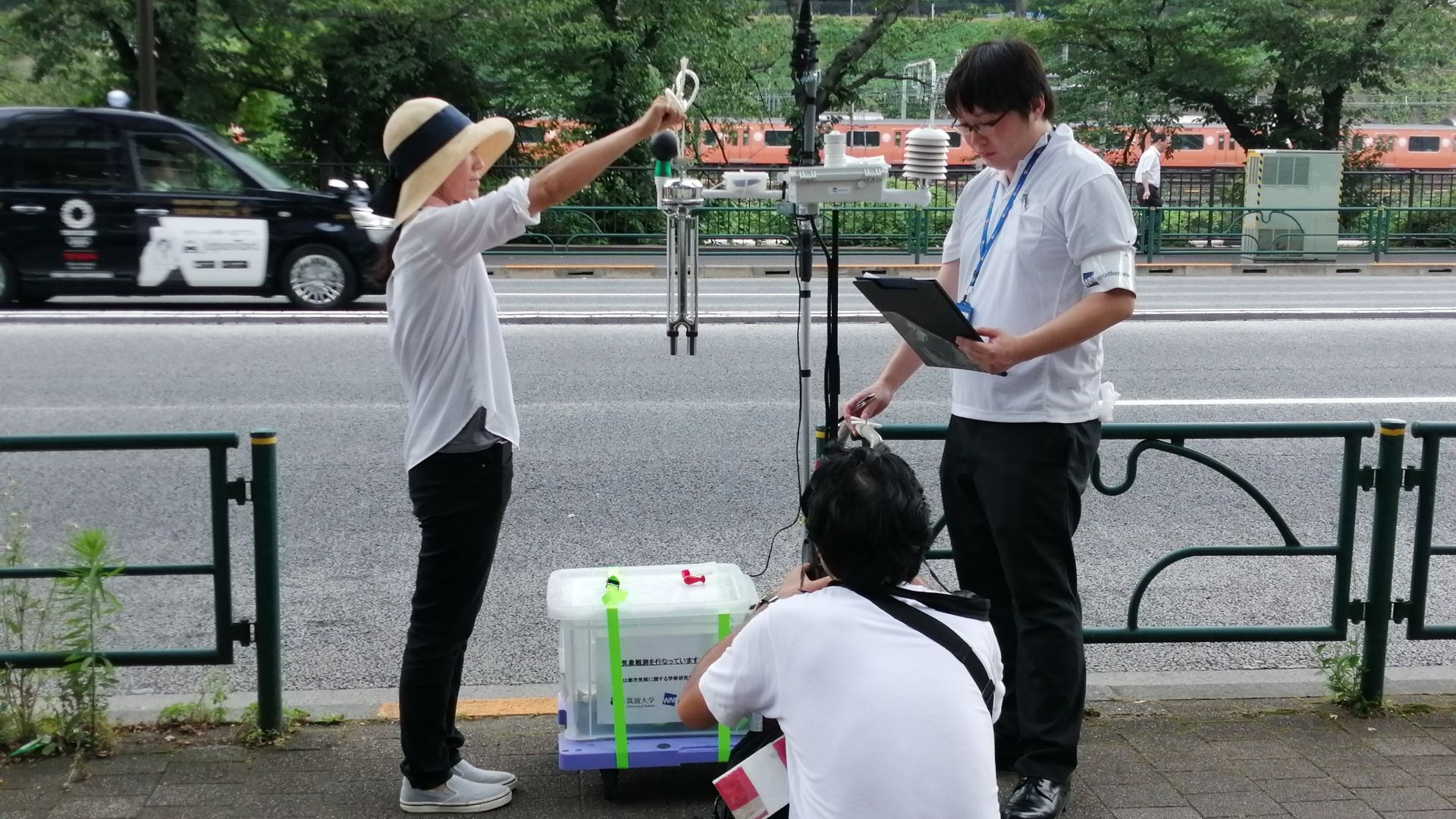
The model's standout feature is its exceptional 5-meter grid resolution. This precision is achieved through "Large Eddy Simulation (LES)," an advanced computational fluid dynamics technique for simulating turbulence.
While standard weather models calculate large-scale airflow patterns, they miss the small "eddies" that form around buildings. LES excels at computing these minute air currents with high fidelity. By incorporating comprehensive data including building heights and shapes, land use patterns, and detailed topographical information into our computational model, we can physically calculate airflow to accurately reproduce and predict building winds and localized wind patterns in complex terrain that conventional forecasting couldn't capture.
Ultra-High Resolution Prediction Model Without Supercomputers: Successful Operationalization Through Our Proprietary Technology
Generally, weather prediction requires increasingly more computational power as the prediction mesh becomes finer, making supercomputers necessary for high-resolution forecasting. Our "Urban Weather Prediction Model" represents industry-leading precision, with the number of computational meshes being 1,000,000 times greater compared to 5km mesh predictions. When making 30-hour forecasts at this resolution, even supercomputers typically require several hours or more to complete calculations. However, Weathernews has reduced this to just a few minutes through our proprietary improvements.
Our approach begins by creating detailed three-dimensional maps that precisely reproduce building shapes and terrain for target areas. Next, we simulate wind flow using City-LES under various directional conditions, assuming winds blow from predetermined directions such as east, west, south, and north. The resulting "wind flow patterns" and "wind strength distributions" are compiled and stored by direction, creating a comprehensive wind pattern database. Since this database is independent of specific meteorological conditions, it can be prepared in advance.
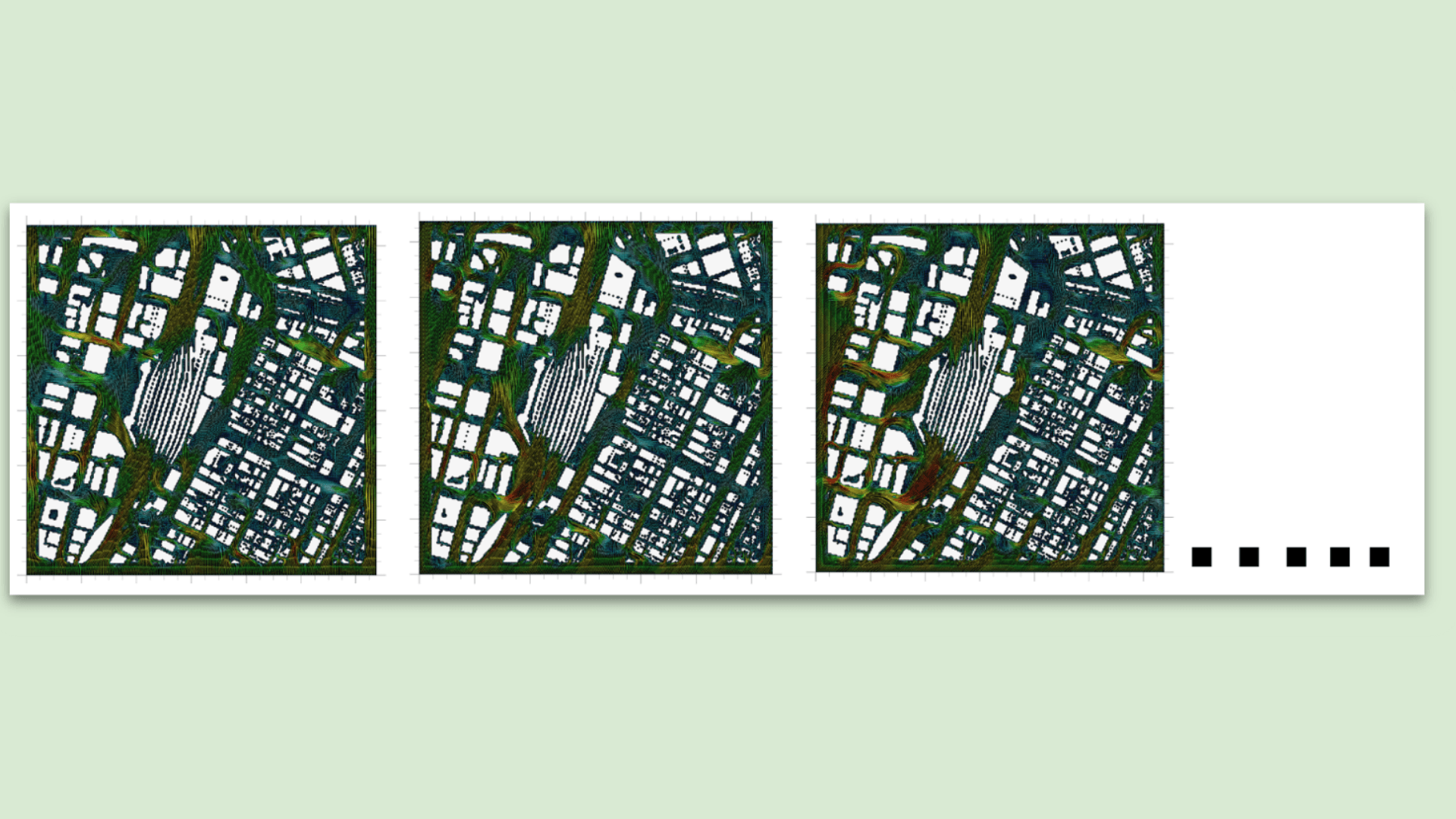
During actual forecasting, we extract representative wind information from daily prediction and observation data, then select the closest matching wind pattern from our database. By combining our prediction data with these wind patterns, we generate 5-meter mesh forecasts. We can also adjust this prediction value creation workflow as needed.
This approach transforms complex wind calculations that would normally require several hours into a process completed within minutes, making daily operational use feasible.
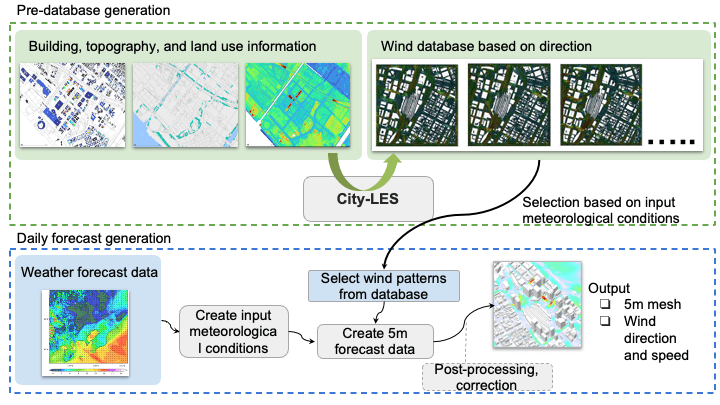
Additionally, Weathernews maximizes cloud computing technology, utilizing server, storage, and software resources on demand to secure computational resources. This enables us to maintain update frequencies comparable to Japan's major conventional prediction models.
Approximately 50% Reduction in Wind Speed Prediction Error! Accurately Reading Urban Winds with Weather IoT Sensor "Soratena Pro"
Weathernews conducted accuracy verification of our "Urban Weather Prediction Model" in Tokyo. We compared predictions from Japan's major 5km mesh prediction model (MSM) and our "Urban Weather Prediction Model" at the Tokyo AMeDAS location against actual AMeDAS Tokyo observational data. MSM tends to underpredict wind strength, particularly showing low frequency in predicting winds of 4m/s or higher. In contrast, our "Urban Weather Prediction Model" successfully reproduces actual wind strength (from the nearest AMeDAS station), demonstrating more accurate representation of urban winds compared to MSM.
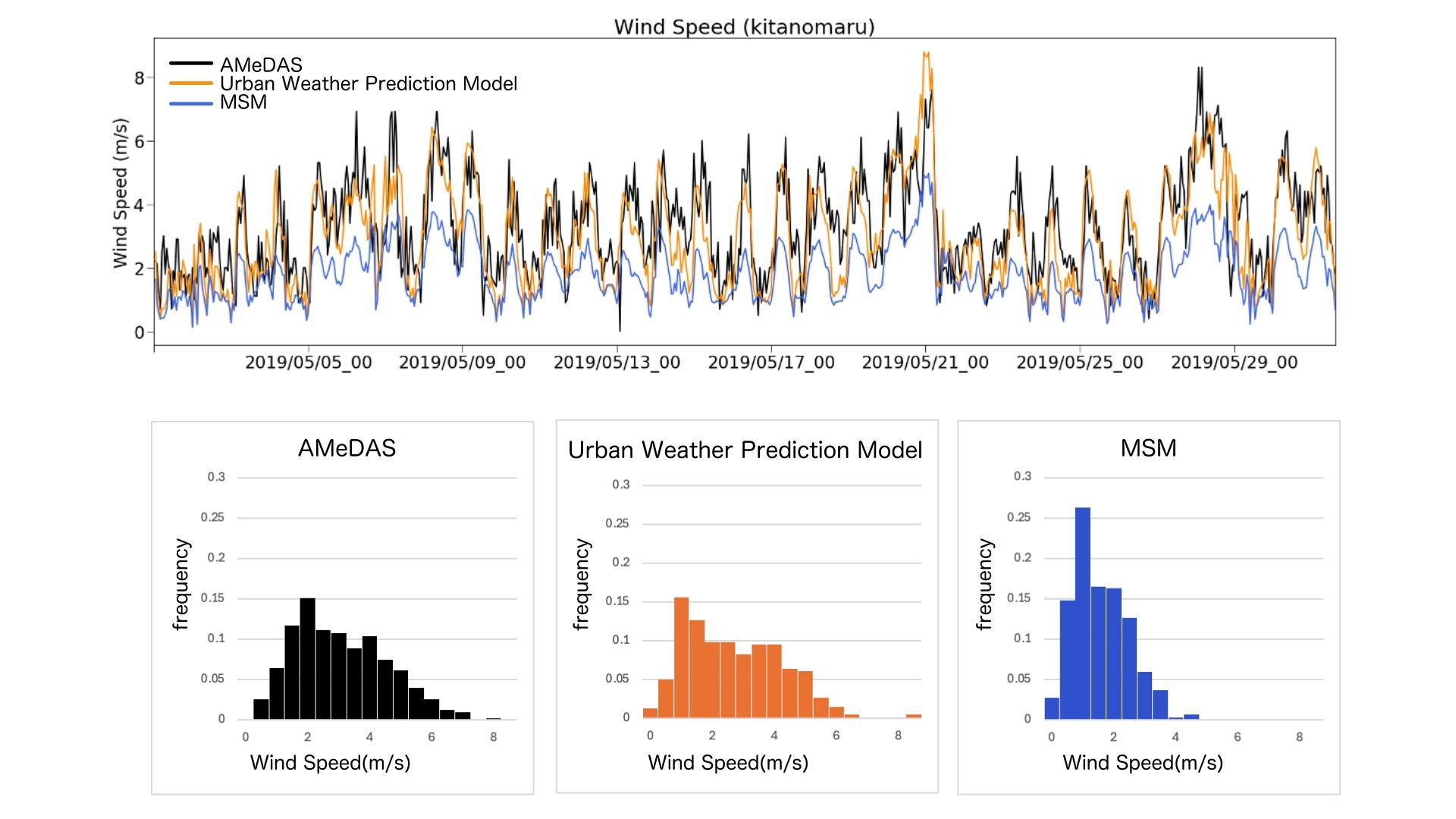
Furthermore, the "Urban Weather Prediction Model" can enhance prediction accuracy when used in conjunction with observation equipment. By installing observation instruments at prediction sites for a certain period to collect pinpoint data, we accumulate wind characteristic data for those locations and use this data to tune our prediction model.
In an actual case study we conducted, we tuned our prediction model using our high-performance weather IoT sensor "Soratena Pro"2 installed on a building rooftop. When evaluated using Root Mean Square Error (RMSE), wind speed errors were reduced by an average of approximately 50% compared to our previously provided predictions, enabling us to deliver more realistic information. While "Soratena Pro" is increasingly used at construction sites for real-time weather monitoring due to its easy installation, combining it with predictions creates expected synergies.
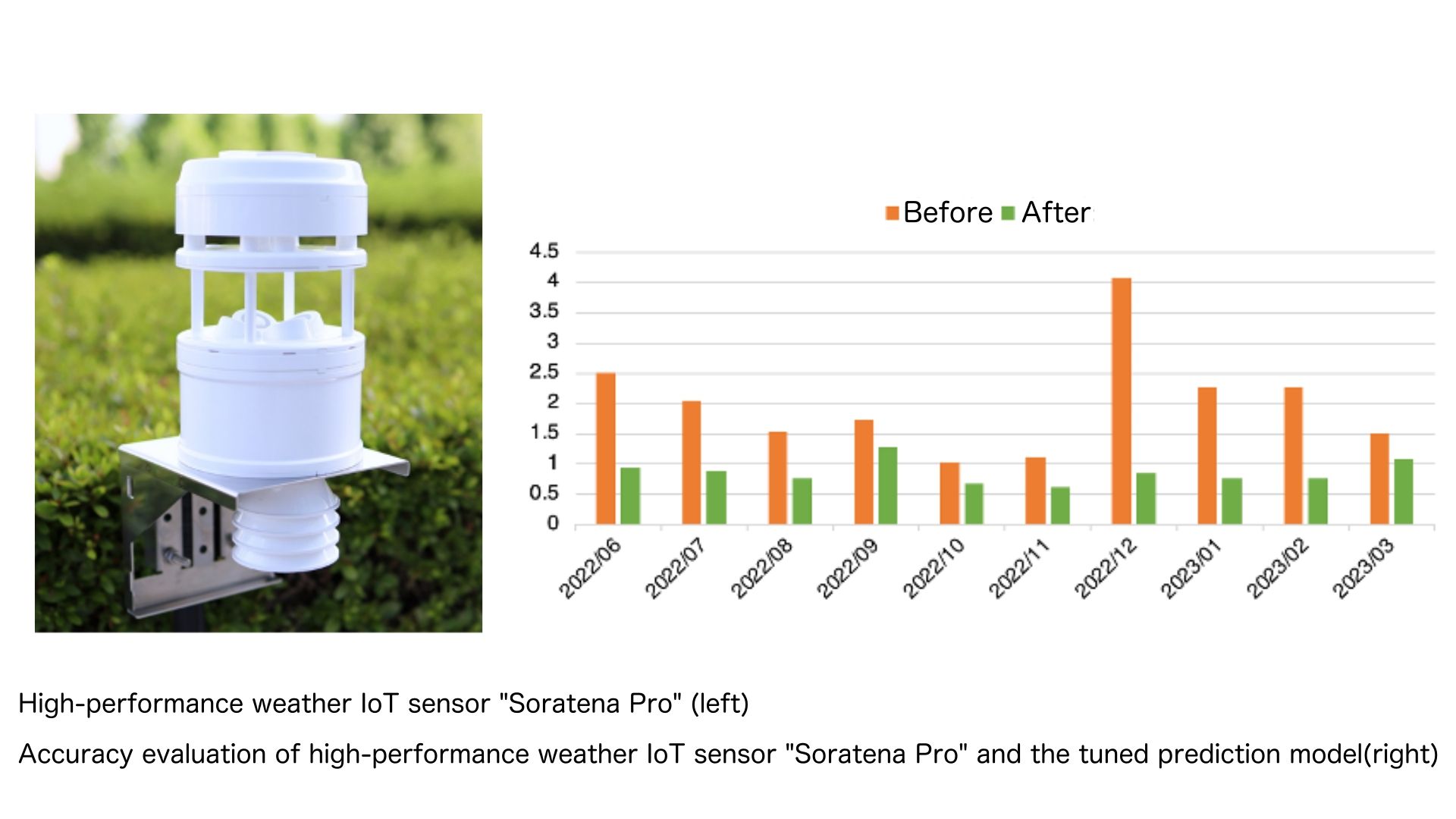
AI-Driven Evolution of Weather Prediction Technology: Weathernews' Ongoing Challenge Against "Invisible Winds"
The "Urban Weather Prediction Model" is already available as part of "Weathernews for Business"3, our corporate weather information service. This service provides detailed hourly predictions up to 34 hours ahead, capturing complex urban wind flows up to 150 meters altitude at 5-meter mesh high resolution.
We currently generate and operate daily predictions for urban areas including the Kaihimmakuhari vicinity and Tokyo's Otemachi and Shibuya districts. These forecasts serve diverse applications: determining work feasibility at construction sites, ensuring user safety and comfort in building facility management, supporting safe outdoor event operations, and assessing drone flight conditions.
Beyond wind direction and speed, the "Urban Weather Prediction Model" can predict gust factors, WBGT (heat index), and shaded versus sunny area conditions, making it valuable for heat stroke prevention measures. We will continue leveraging this technology to deliver high-resolution, high-accuracy predictions that contribute to safe and comfortable urban living.
Urban weather prediction remains an evolving field. In addition to ongoing accuracy improvements, we are pursuing further technological advancement by incorporating AI technology to enable simultaneous calculations across broader areas and enhance versatility. Our challenge to visualize the "invisible winds" of cities continues.
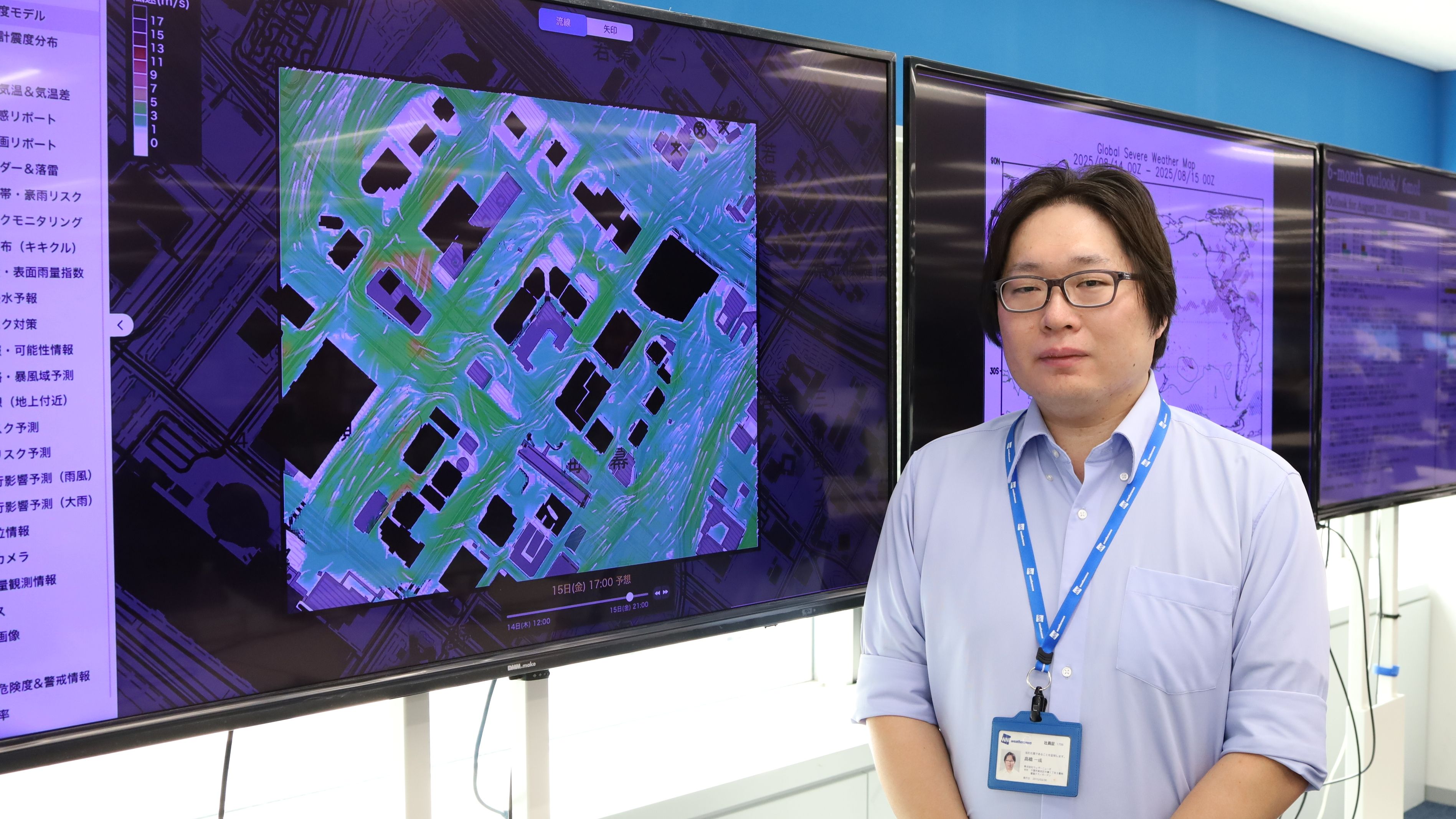
Footnotes
- 1:https://agupubs.onlinelibrary.wiley.com/doi/full/10.1029/2024MS004367 ↩︎
- 2:High-performance weather IoT sensor "Soratena Pro" is a compact weather observation device developed by Weathernews that measures wind direction and speed, temperature, humidity, etc. with high precision. ↩︎
- 3:For details on the ultra-high resolution model, click here. Press release announced in 2024: Providing 5-meter mesh ultra-high resolution predictions through "Weathernews for business"」 ↩︎
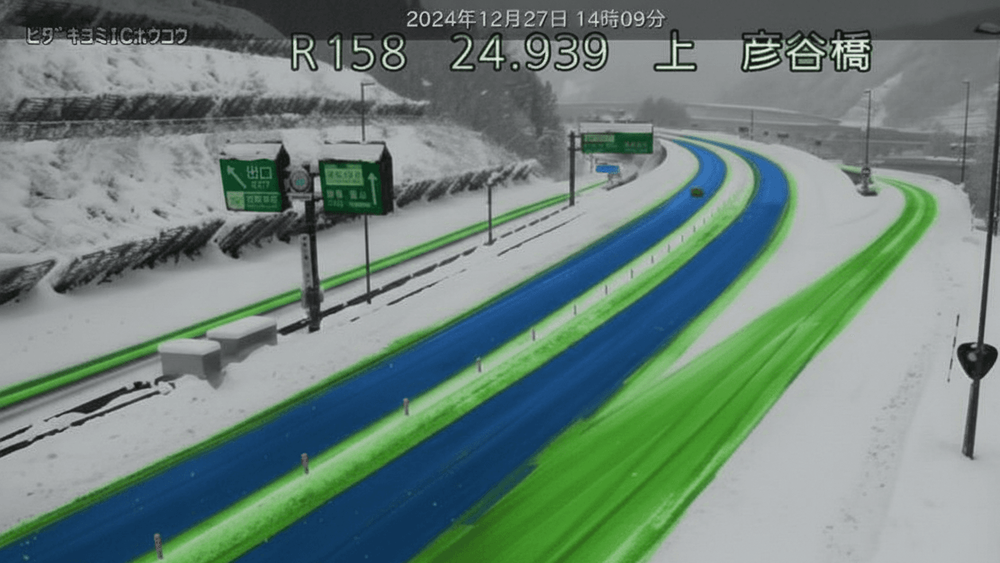
December 25, 2025
Snow Removal Decisions Beyond Gut Instincts: How AI Is Redefining Snow Accumulation Forecasting
December 23, 2025
Behind the Scenes of Real-Time Fog Detection: How AI Instantly Analyzes 3,500 Cameras Nationwide
December 22, 2025
Japan’s Largest Network: Why Weathernews Operates 1,000 Proprietary Pollen Monitoring Devices